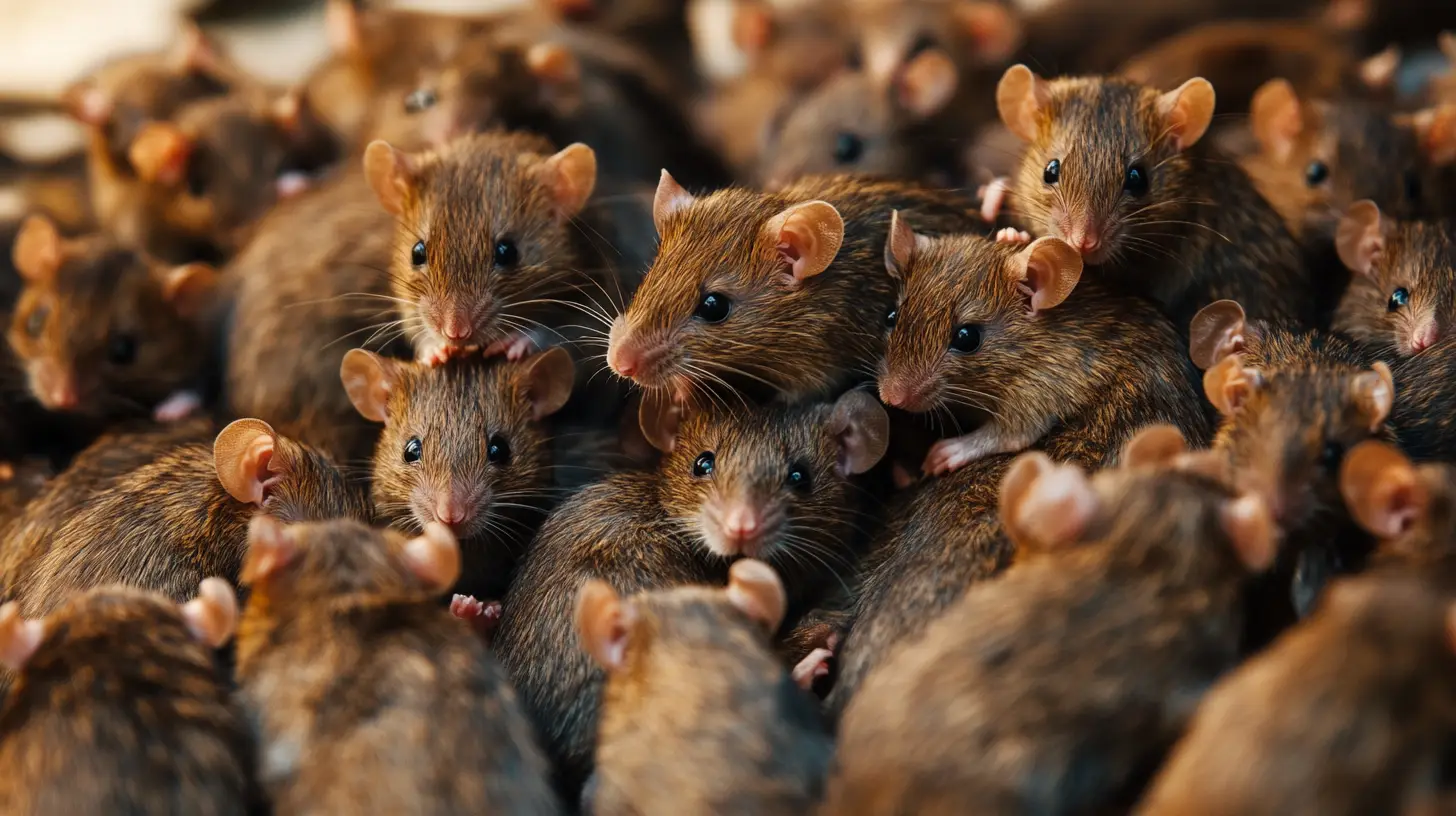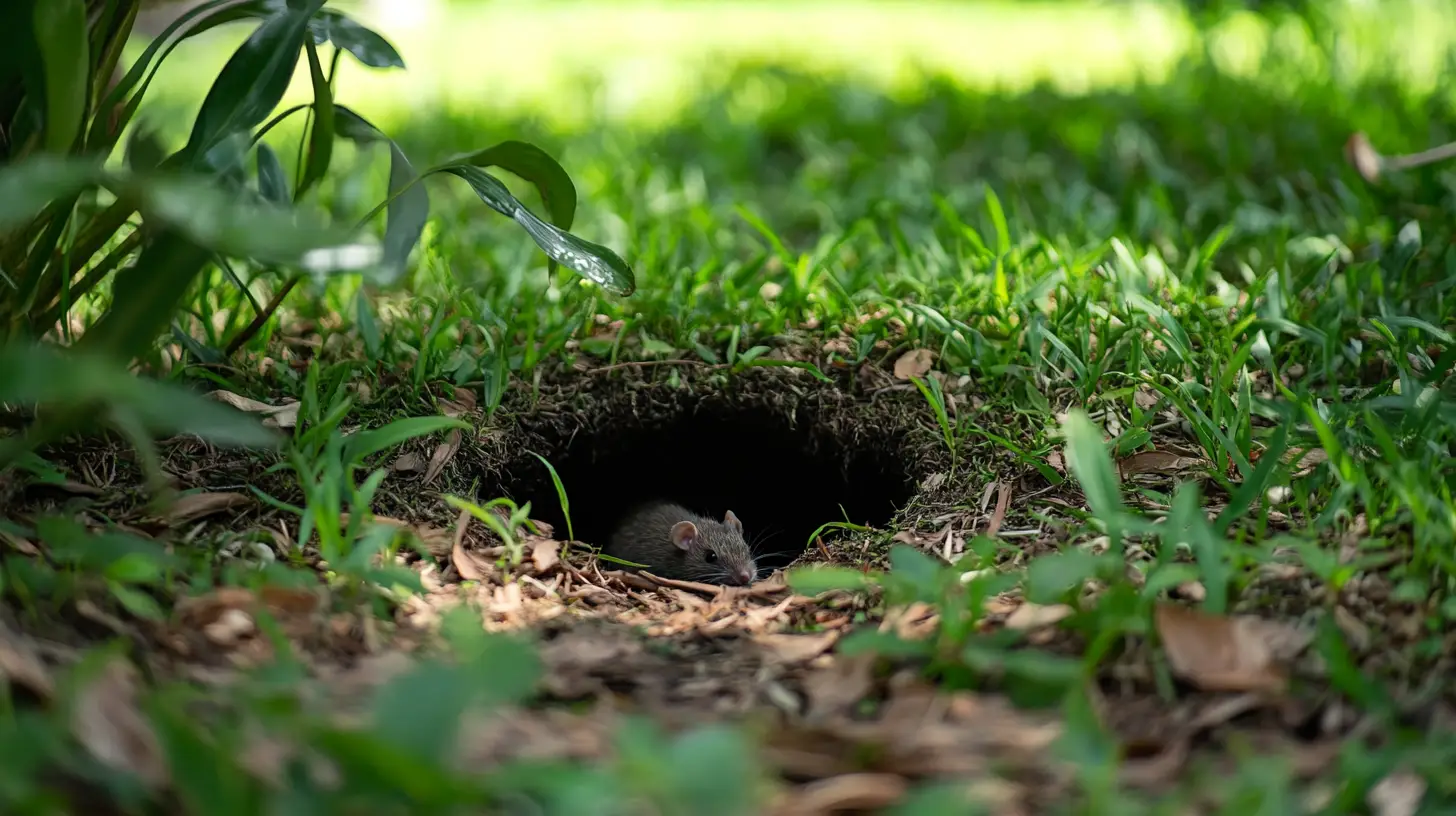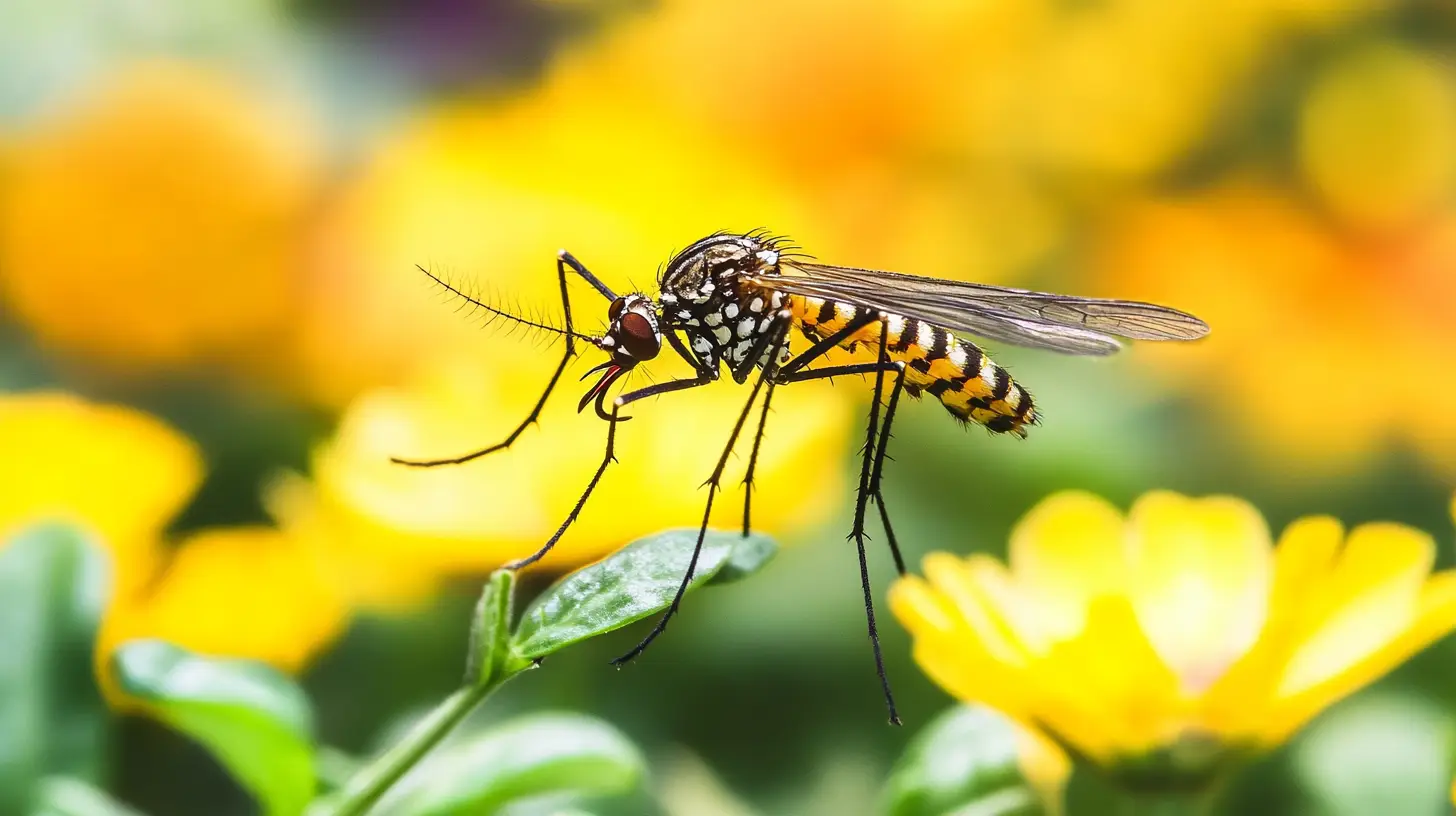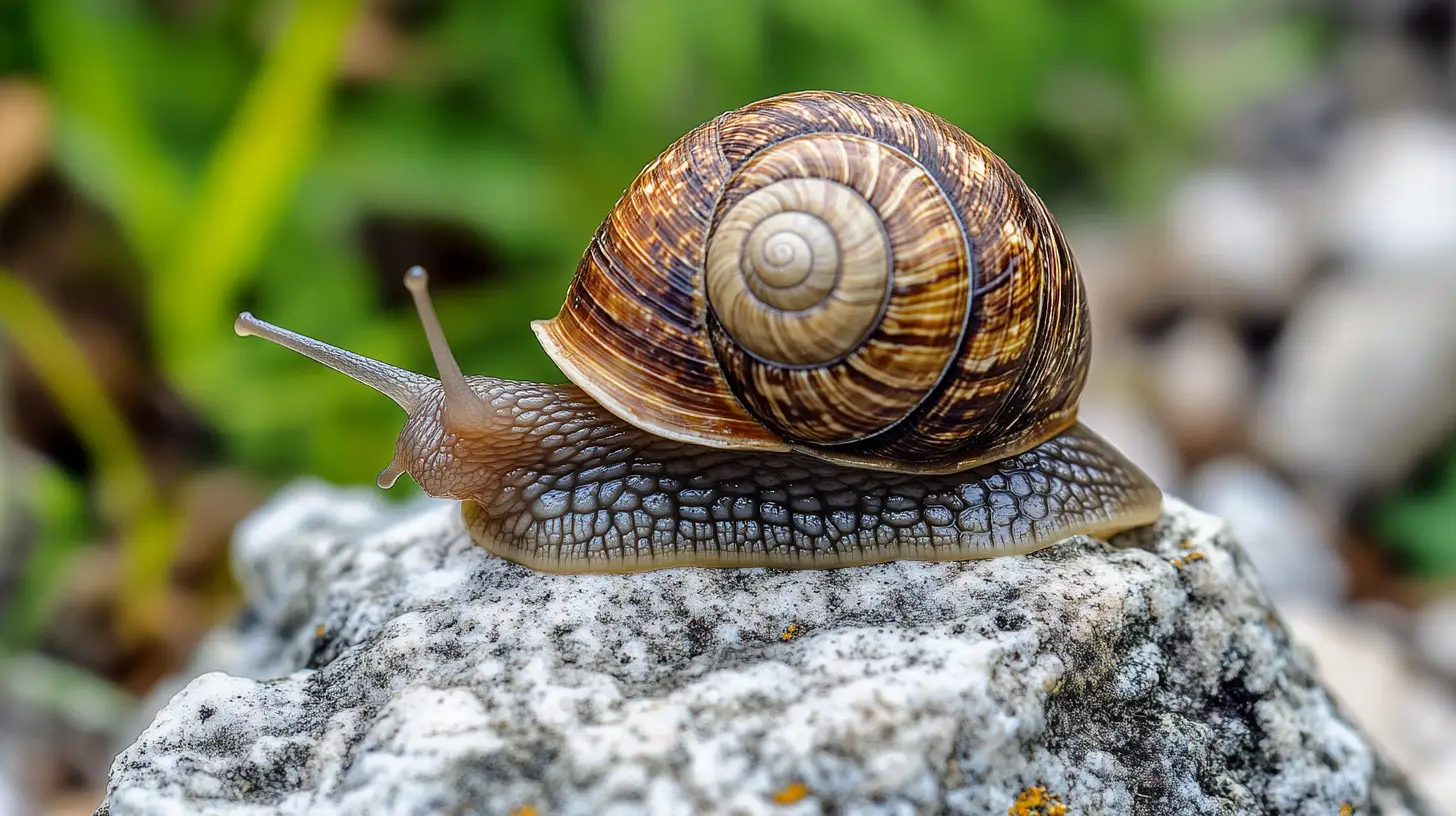
Table of Contents
Carpenter ants are more than just a nuisance; they’re skilled architects of destruction. While they’re known for nesting in damp or decaying wood, they can also invade sound structures, making them a formidable foe. You might spot them trailing through your kitchen or notice sawdust-like shavings, hinting at their presence.
Carpenter ants aren’t here to redecorate—they’re here to excavate! Unlike termites, these crafty critters don’t munch on wood; they hollow it out to build luxury ant condos in your walls. With a queen’s palace and multiple satellite “vacation homes,” they can be tough tenants to evict.
If you’re spotting them around, it might be a clue that moisture issues are lurking. Active mostly at night, they love to forage for sweet treats and can deliver a pinch that’ll make you take notice. It’s time to give these little homewreckers their marching orders!
Key Takeaways
- Carpenter ants are large ants that excavate wood to create nests, potentially causing structural damage, unlike termites, which consume wood.
- Recognizing early signs of carpenter ant infestations, such as rustling noises, sawdust piles, and discarded wings, is crucial for timely intervention.
- Carpenter ants prefer moist or decaying wood for nesting but can also infest sound wood structures, often entering homes in search of food like proteins and sugars.
- Understanding the life cycle of carpenter ants, from egg to adult, aids in developing effective management strategies, emphasizing early detection and preventive measures.
- Preventing carpenter ant infestations involves controlling moisture, repairing wood damage, sealing entry points, and maintaining a clutter-free environment around the home.
What are Carpenter Ants?
Carpenter ants, common around Lakewood Ranch, are large ants distinguished by their black or red and black bodies. They play a crucial role in ecosystems by breaking down dead wood, returning nutrients to the soil.
Unlike termites, carpenter ants don’t eat wood; they excavate it to create nests. This behavior can destabilize wood structures over time, complicating an infestation. Carpenter ant colonies can have both a primary nest and multiple satellite nests. The primary nest usually houses the queen, while satellite nests accommodate workers and mature larvae. This structure helps the colony survive in diverse environments and protects against threats.
The worker ants vary in size depending on their roles, which range from small “minor” workers that forage and care for the young to larger “major” workers that protect the colony. This polymorphism helps the colony function efficiently.
Biological factors make carpenter ants thrive in damp or decayed wood, but dry, sound wood isn’t safe from them either. Their urge to establish colonies, often in wall voids or attic beams, leads them indoors, often in search of food which includes proteins and sugars.
Carpenter ants live harmoniously with the environment by recycling organic material, yet indoors they pose threats to home integrity. Understanding their lifecycle and behaviors helps in developing effective strategies to manage and eliminate them. Recognizing early warning signs like rustling noises in walls or piles of sawdust is vital for timely intervention.
How to Identify Carpenter Ants?
Recognizing carpenter ants is crucial in preventing important structural damage to your Lakewood Ranch home. These ants stand out due to their size and color. Typically, they’re larger than most household ants, measuring 1/4 to 1/2 inch long. Colors vary, but they’re generally black or a combination of red and black. Look for exact physical characteristics. They have a smooth, evenly rounded thorax when viewed from the side, distinguishing them from other ants. Also, their antennae are bent, unlike termites’ straight antennae.
Observe their activity patterns. Carpenter ants, often nocturnal, forage for food in the evening. You’ll typically see them trailing in search of proteins and sugars, which they crave.
Spot foraging patterns and nesting habits. Carpenter ants create parent colonies within moist or decayed wood and establish satellite colonies in drier locations around your home. Small piles of sawdust-like shavings often indicate their presence, signaling nearby nests.
Listen for rustling noises in walls. These sounds, more noticeable at night, suggest ants are constructing tunnels within wooden structures. Although they don’t eat wood, their excavation can weaken structural integrity over time.
Understanding these characteristics aids in early detection and effective strategies to get rid of carpenter ants, reducing their impact on your property and environment.
Life Cycle of a Carpenter Ant
Understanding the life cycle of carpenter ants offers insight into effectively managing and eventually eliminating them, especially for those residing in areas like Lakewood Ranch. Carpenter ants undergo complete metamorphosis, encompassing four distinct stages: egg, larva, pupa, and adult.
- Egg Stage: Eggs are laid by the queen in secure, concealed nests, often in damp or decayed wood, aligning with their preference for such environments. Each egg is small, oval, and typically hatches in 6-12 days.
- Larva Stage: Upon hatching, larvae emerge as legless grubs that depend on workers for nourishment. This stage persists for around three weeks, during which larvae grow and develop in preparation for pupation.
- Pupa Stage: Transitioning from larvae, pupae resemble adults but in a soft, cocoon-like state. Depending on conditions, this stage may last 9-30 days, as the ant gradually takes its final adult form.
- Adult Stage: As adults, carpenter ants assume various roles—workers, queens, or drones. Workers gather food and maintain the nest, ensuring colony survival. Queens, identified by their larger size, establish new colonies, and once or twice annually, reproductives with wings (alates) swarm to mate and form new colonies.
Recognizing these stages aids in your efforts to get rid of carpenter ants and minimize their impact on structures. An appreciation of their natural cycle can lead to better timing when employing interventions and preventive measures. In environments like Lakewood Ranch, focusing on early detection and understanding the life cycle plays a crucial role in protecting local structures from infestation.
Top 3 Reasons Why There are Carpenter Ants in Your Home
Carpenter ants play a important role in the environment, yet their presence in your home indicates exact conditions. Recognizing these conditions helps you address and manage an infestation effectively, especially in areas like Lakewood Ranch.
Foraging for Food
Carpenter ants often enter homes searching for food sources, particularly proteins and sugars. Leftover crumbs or spills in kitchens attract these ants, prompting them to establish a foraging trail. If you notice ants gathering around trash bins or pantry items, it’s crucial to clean up any food residues promptly to discourage their interest.
Moisture Damage
Damp or decaying wood creates an ideal nesting environment for carpenter ants. Leaky pipes, poor drainage, or humid conditions within walls or basements increase moisture levels, attracting these ants. Regular inspections and repairs to prevent water damage can help make your home less inviting for nesting carpenter ants.
A Nest is Nearby
Carpenter ants prefer to establish colonies close to their outdoor parent colonies. Dense vegetation or wood piles near your home often harbor these ants. If nests are nearby, it’s likely they’ll explore inside, seeking new nesting sites or food. Keeping surrounding areas tidy and inspecting any adjacent wood structures can reduce the chances of indoor ant settlements.
Signs of a Carpenter Ant Infestation
Identifying carpenter ant infestation early can prevent serious structural damage. Given their nesting habits and nocturnal nature, these ants might not be immediately visible. Pay attention to exact indicators to determine their presence in your Lakewood Ranch home.
Seeing Carpenter Ants in Your Home
Carpenter ants are larger than most household ants, measuring 1/4 to 1/2 inch long. They’re typically black or red and black in coloration. Spotting these ants walking along baseboards, wall corners, or kitchen counters, particularly after sunset, is an early sign of infestation. They often forage for food in search of proteins and sugars.
Finding Ant Wings
During mating seasons, usually spring, winged carpenter ants, or swarmers, emerge from nests to establish new colonies. Seeing discarded wings around windowsills or doorframes indicates the arrival of these reproductive ants. These wings are similar in size and shape to those of termites but have different characteristics.
Spotting Wood Shavings
Evidence of carpenter ants can come in the form of wood shavings that resemble coarse sawdust, known as frass. Unlike termites that consume wood, carpenter ants remove it to carve out galleries. This frass mixed with parts of dead ants often accumulates near entrances to their nests. These piles might appear beneath wooden structures or in crawl spaces.
Discovering Small Holes in Wood
The presence of small, smooth holes on wooden beams, walls, or furniture suggests carpenter ants are at work. These holes serve as entrances or exits to their nesting galleries. If left unchecked, this tunneling can compromise the integrity of the structure, particularly in humid environments like Lakewood Ranch.
Carpenter Ant Threats: What Type of Damage Can They Cause?
Carpenter ants can cause important structural damage by hollowing out wood for nests. In Lakewood Ranch, where humidity levels are often high, these ants thrive and pose a threat to wooden structures.
Carpenter Ants vs Termites
Carpenter ants and termites both cause wood damage but in distinct ways. Carpenter ants don’t eat wood; they excavate it for nesting, creating smooth tunnels that can undermine structural integrity. Their tunnels typically contain bits of uneaten wood, known as frass. In contrast, termites consume wood, leaving behind a network of rough, hollow galleries. Understanding these differences aids in identifying infestations and choosing the appropriate method to get rid of carpenter ants.
Carpenter Ant Prevention
Preventing carpenter ants is crucial for protecting your home and environment, especially in humid regions like Lakewood Ranch. With strategic actions, you can avoid infestations and preserve the structural integrity of your surroundings.
Prevent Moisture Accumulation
Controlling moisture is key to deterring carpenter ants, which thrive in damp environments. Inspect your home for leaks, particularly in basements, attics, and bathrooms. Ensure proper ventilation and use dehumidifiers if necessary. Address drainage issues, ensuring gutters and downspouts direct water away from your foundation.
Repair Existing Damage
Repairing damage promptly eliminates potential nesting sites. Examine wood structures and replace compromised sections. Sealing cracks in your home’s exterior also prevents ants from gaining entry. By maintaining your property’s integrity, you reduce enticing habitats for these pests.
Repair Injured Trees
Injured trees attract carpenter ants by offering easy access to softwood. Trim dead or damaged wood from trees and shrubs to eliminate these potential sites. Ensure tree wounds are properly treated and sealed to prevent ant infestations and promote tree health.
Prune Branches
Branches that touch your home provide a bridge for carpenter ants. Regularly prune overhanging branches and shrubs to maintain separation from your house. This deters ants from accessing your home and limits potential nesting areas.
Check Firewood Carefully
Firewood can harbor carpenter ants if left unchecked. Store firewood at least 20 feet from your home and elevate it to allow airflow, reducing moisture. Inspect firewood regularly for signs of infestation, such as boreholes or sawdust, to prevent pests from spreading.
Apply Treatment to Wood
Protective treatments make wood less appealing to carpenter ants. Consider applying borate-based treatments to vulnerable wood surfaces. For added protection, paint or seal exposed wood areas, creating barriers that deter ant entry and colonization. These preventative measures support ongoing efforts to get rid of carpenter ants before they cause important damage.
How to Locate a Carpenter Ant Nest
Identifying the location of a carpenter ant nest is crucial for effective management. Begin by observing their trails, particularly during nighttime when they’re most active. Follow these trails to potential nesting sites, such as damp or decaying wood.
Listen for rustling sounds within walls or ceilings, which can indicate tunneling activity. Look for piles of wood shavings or frass near wooden structures, as these are telltale signs of carpenter ant presence. By pinpointing the nest, you can take targeted action to eliminate the colony and protect your home from further damage.
Frequently Asked Questions (FAQs)
What are carpenter ants and why are they a concern?
Carpenter ants are large ants, usually black or red and black, that can cause structural damage by tunneling through wood. Unlike termites, they don’t consume wood. Instead, they excavate wood to create nests, which can weaken structural integrity over time. Their presence in a home can lead to significant damage if not addressed.
How can I identify a carpenter ant infestation in my home?
Key signs of a carpenter ant infestation include sightings of large ants, wood shavings or “frass” near nesting sites, rustling noises within walls, and smooth holes in wood. Discarded wings may also be found during mating season. Identifying these signs early can help prevent serious damage.
Where are carpenter ants most likely to nest?
Carpenter ants prefer damp or decaying wood and are often found in areas like wall voids, attic beams, or wooden fixtures with moisture damage. They establish parent colonies in moist wood, creating satellite colonies in drier areas while foraging for food sources like proteins and sugars.
What is the life cycle of carpenter ants?
Carpenter ants undergo complete metamorphosis, progressing through egg, larva, pupa, and adult stages. The queen lays eggs that hatch in 6-12 days. Larvae are cared for by worker ants before pupating. Adult ants take on various colony roles, with queens starting new colonies.
Why might carpenter ants invade my home?
Carpenter ants enter homes for food, moisture, and nesting opportunities. They are attracted to protein and sugar sources, damp or decaying wood, and are likely to explore indoors if outdoor colonies are nearby. Regular inspections and cleaning can help deter infestations.
How do carpenter ants differ from termites?
Carpenter ants excavate wood to create smooth tunnels and leave behind frass, or uneaten wood shavings. Termites consume wood, producing rough, hollow tunnels. This distinction is key for proper identification and determining the appropriate ant removal methods.
What prevention strategies can I use against carpenter ants?
Prevent carpenter ant infestations by controlling moisture, repairing existing damage, and sealing entry points. Inspect for leaks, ensure proper drainage, and prune branches touching your home. Store firewood away from the house and apply protective wood treatments to deter ants.









